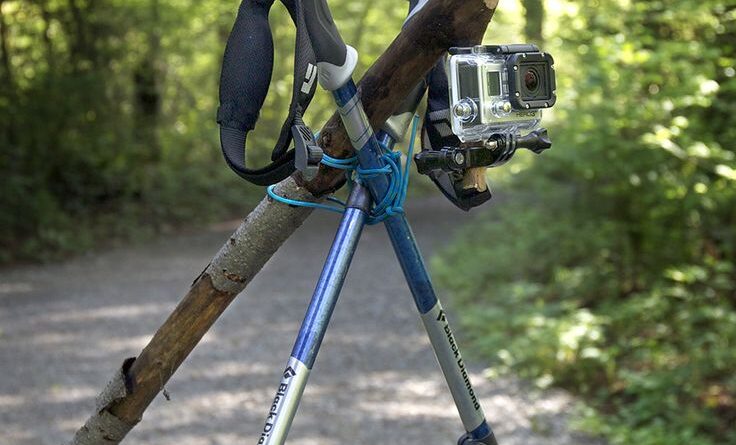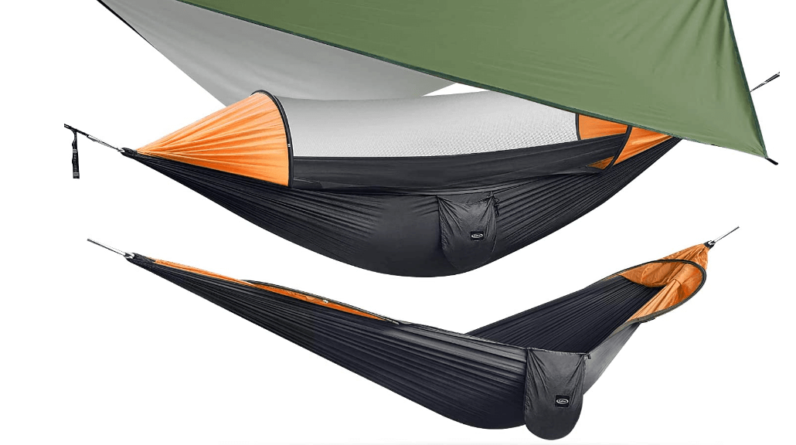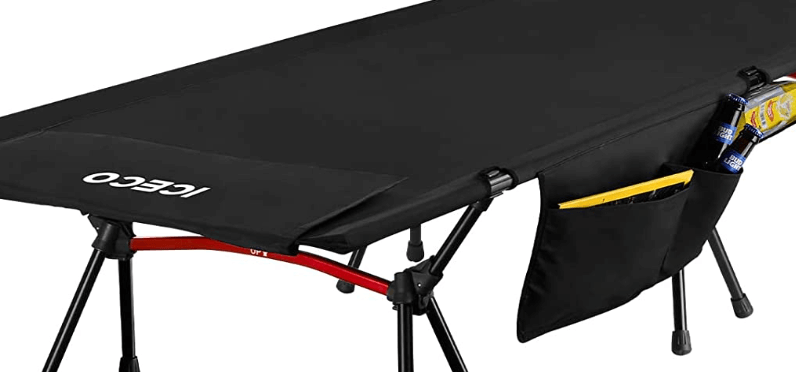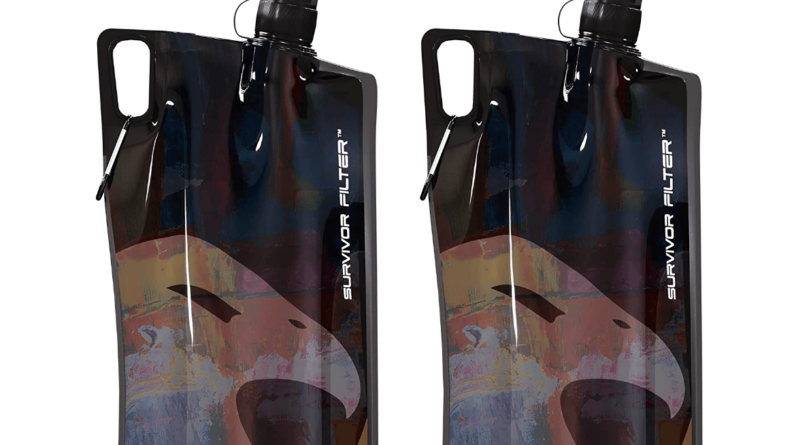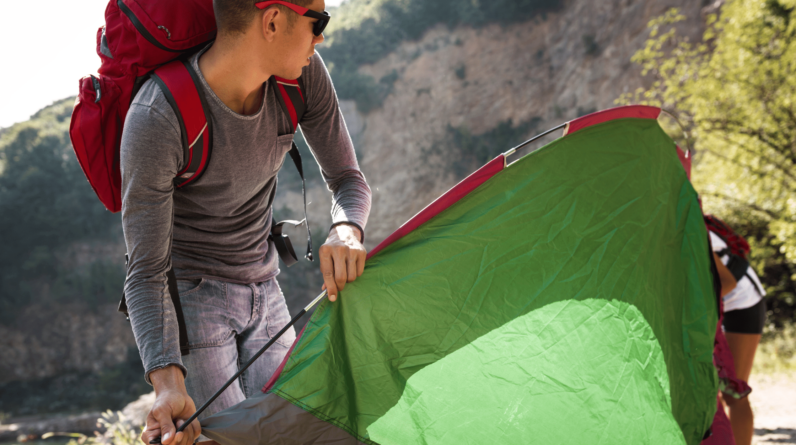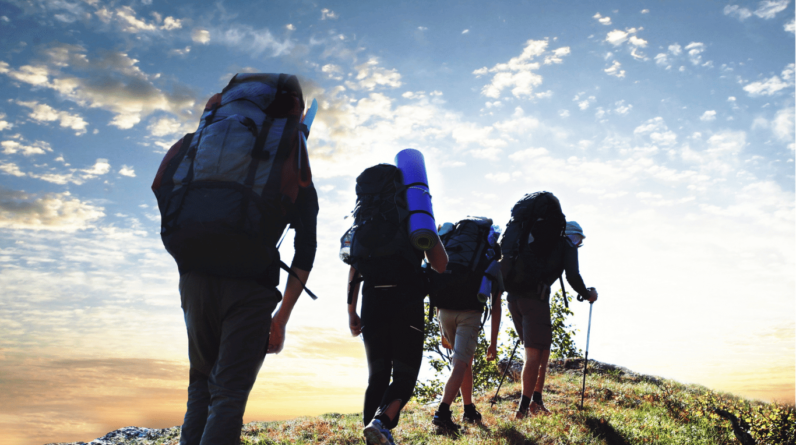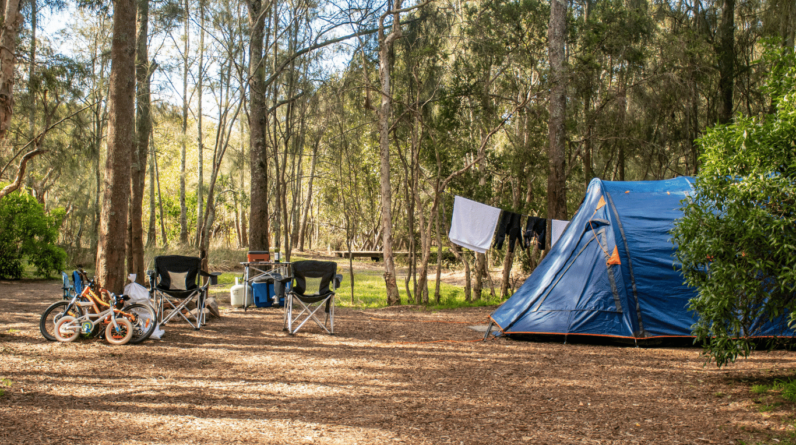
Introduction
Whether you’re a seasoned camper or a first-timer, setting up a good campsite is crucial for having an enjoyable outdoor experience. This campsite setup guide will walk you through choosing the perfect campsite, arranging it efficiently, setting up a functional camp kitchen, ensuring safety measures, practicing eco-friendly camping, and finally, tearing down and cleaning up your site.

Choosing the Perfect Campsite
Before you can enjoy the crackling fire and toasted marshmallows, you need to find a good campsite. There are several factors to consider when choosing a site, from rules and regulations in public camping areas to weather and terrain considerations.
Understanding the Features of a Good Campsite
A good campsite offers a blend of convenience, safety, and natural beauty. Look for a spot that’s relatively flat and free from large rocks, which can make sleeping uncomfortable. Additionally, a soft surface can provide cushioning for your tent, so consider a site with grass or a thick layer of leaves.
Proximity to a water source is beneficial for cooking and cleaning, but camping too close can disturb wildlife who also rely on the water. A rule of thumb is to camp at least 200 feet away from water sources to protect both the wildlife and yourself from potential flooding.
Natural shelter, such as trees or large rocks, can help protect your site from wind and rain. But beware of trees with dead branches, known as widow-makers, as these can fall and cause serious injury.
Rules and Regulations in Public Camping Areas
Public campgrounds, national parks, and state forests often have specific rules to protect the environment and ensure everyone’s safety and enjoyment. These rules can cover a wide range of areas such as permitted camping locations, campfire regulations, waste disposal, and wildlife interaction.
For instance, some areas only allow camping in designated campsites, while others permit dispersed camping as long as it’s a certain distance from trails and water sources. Fire regulations can vary greatly depending on the location and time of year, and may require you to use a fire ring or prohibit open fires entirely. Make sure you’re familiar with these rules before you set up camp.
Weather and Terrain Considerations
Weather can significantly impact your camping experience, so always check the forecast for your camping dates and location. Be wary of potential weather hazards such as heavy rain, high winds, or lightning storms. In case of rain, avoid areas that might be prone to flooding, like dry riverbeds or the bottoms of hills.
The terrain of your campsite also plays a crucial role in your comfort and safety. Choose a flat area for setting up your tent, but keep in mind that you don’t want to be in the path of water runoff. Slopes can direct rainwater into your sleeping area, so if the ground is slanted, set up your tent so the door faces downhill to prevent water from flowing in.
Understanding these considerations when choosing a campsite will set you on the path to a safe and enjoyable camping experience. Up next, we’ll get into how to arrange your campsite for the best balance of comfort, convenience, and safety.
Arranging Your Campsite
Setting up a well-organized campsite is key to a comfortable and functional outdoor living space. How you arrange your site can affect everything from your sleep quality to your meal prep efficiency. Let’s delve into some tips for positioning your tents, fire pits, camp furniture, and more.

Ideal Locations for Tents, Fire Pits, and Camp Kitchens
When it comes to the ultimate tent camping setup, prioritize safety and comfort. Aim for a flat, raised area that’s away from potential water paths to keep dry if it rains. The door of your tent should face a beautiful view or your fire pit, whichever you prefer. Also, try to position your tent downwind from your campfire to avoid smoke entering your sleeping area.
Your fire pit, if allowed, should be in a clear, open area at a safe distance from your tent, usually about 15 feet. It should be away from any hanging branches or dry grass that could potentially catch fire. For established campgrounds, use existing fire pits instead of creating new ones to minimize the impact on the environment.
Your camp kitchen should be downwind and a little ways off from your sleeping area to keep food odors away from your tent. This is important not just for the sake of smells but to deter wildlife from investigating your tent.
Placement of Camp Furniture for Comfort and Convenience
When arranging your ultimate camping setup, think about the flow of your activities. Chairs and tables should be positioned near the fire pit for communal gatherings. Meanwhile, if you have a camping hammock or sunshade, find a spot between trees or poles where you can set it up without obstructing the rest of your campsite.
Ensure easy access to your camping gear, food and drink supplies, and personal items. This could mean setting up a small table next to your tent for water bottles and flashlights or hanging a gear loft or organizer in your tent to keep essential items within easy reach.
Importance of a Clear and Organized Campsite
An organized campsite not only looks nice but also enhances safety and functionality. Keep gear stored neatly to avoid tripping hazards and make items easy to find. Regularly clean your campsite, especially the kitchen area, to deter pests and wildlife.
Having a well-arranged campsite ensures you spend less time searching for items or navigating around obstacles, and more time enjoying the beautiful outdoors. Up next, we’ll explore how to set up a functional camp kitchen that makes meal prep a breeze.
Setting Up a Functional Camp Kitchen
A camp kitchen that’s efficient and easy to use can make your camping experience far more enjoyable. Let’s look at the essentials for your outdoor kitchen, safety guidelines for food storage and preparation, and tips for a smooth cooking and cleaning process.
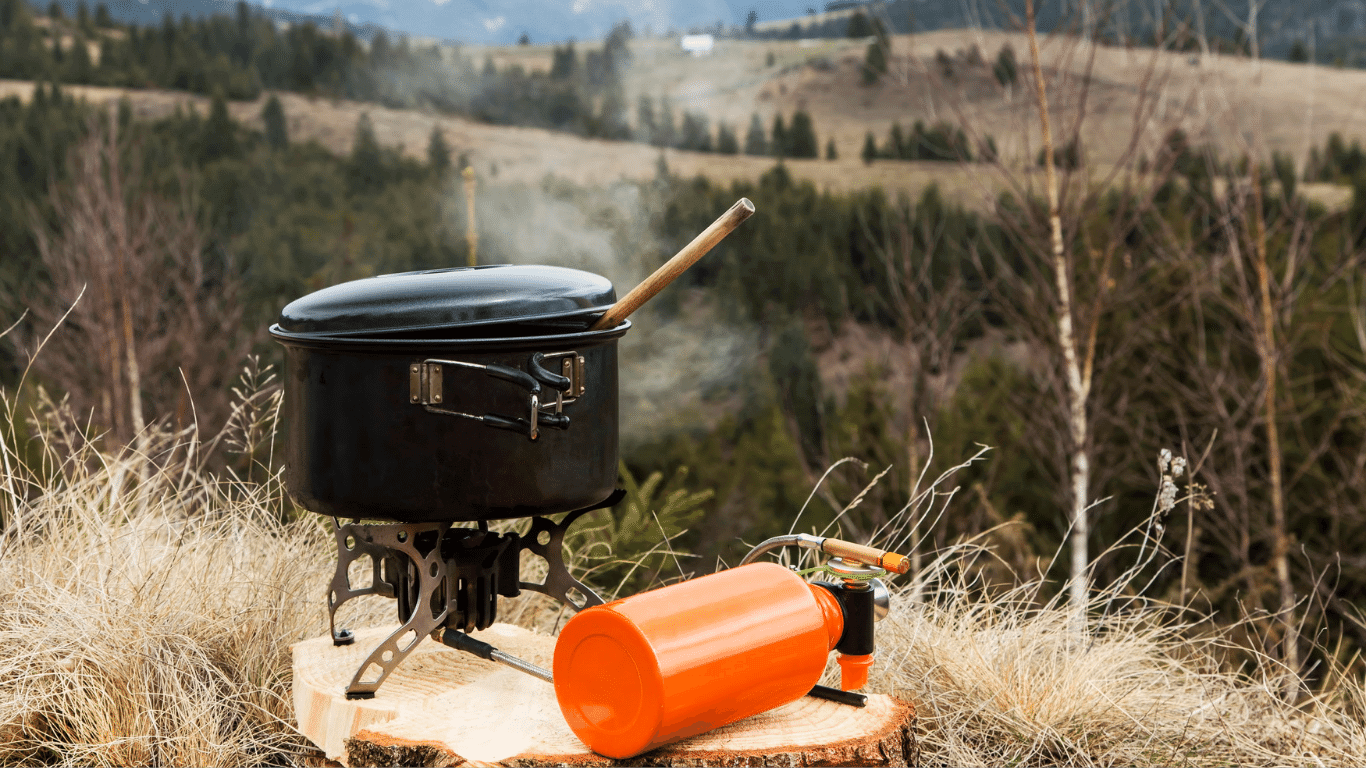
Important Equipment for a Camp Kitchen
Your camp kitchen’s equipment list will depend on your meal plans, but there are some basics you’ll likely need. A camping stove is a must for most, along with fuel. You’ll need cookware, such as a pot, pan, and utensils. A cooler can help keep perishables fresh, while a water container and purification method are necessary for safe drinking water.
Consider your food preparation needs. A cutting board and knife are handy for chopping ingredients. Don’t forget dining essentials, like plates, cups, and utensils. Lastly, packing a portable camp sink or biodegradable soap can make cleanup easier and more eco-friendly.
Safety Guidelines for Food Storage and Preparation
Proper food storage is crucial to prevent foodborne illnesses and minimize wildlife encounters. Keep food in airtight containers and store them in a bear-resistant food storage box or hung from a tree if you’re in bear country. Never store food in your tent.
Prepare food with clean hands and surfaces to prevent cross-contamination. Keep raw and cooked foods separate, and make sure to cook foods to their safe internal temperatures to kill harmful bacteria.
Efficient Setup Tips for Cooking and Cleaning Ease
Set up your cooking station near your food and utensils storage to save steps. If you’re cooking on a fire, have a supply of firewood nearby. Keep a trash bag within reach for quick cleanups.
For washing up, designate a spot away from natural water sources. This protects the water quality and helps keep soap, food scraps, and human scent away from wildlife.
With your camp kitchen in place, you’ll be ready to cook delicious meals under the stars. Up next, we’ll cover campsite safety measures to ensure a worry-free camping experience.
Campsite Safety Measures
Ensuring safety while camping cannot be overstated. As campers, we want to ensure not only our safety but also the safety of our surroundings. Let’s delve deeper into the measures we can take to secure our campfires, deal with wildlife encounters, and what our first aid kit should consist of.
Guidelines for Campfires
Fire can bring warmth, light, and a way to cook meals, but it can also pose serious threats if not handled properly. Always confirm if fires are permitted in your selected camping area. If they are, use designated fire pits if they exist. If not, select an area well away from tent walls, low-hanging branches, and other flammable items.
Keep your fire to a manageable size to prevent unwanted accidents. Never leave your fire unattended – this is an essential safety rule. Always have a water source or a fire extinguisher close by to put out the fire if it gets out of control. When it’s time to retire or leave your campsite, ensure the fire is completely extinguished, leaving no trace of burning embers.
Wildlife Precautions
Enjoying the wildlife is part of the camping experience. However, we must remember to respect their habitat. Secure your food and trash so as not to entice animals to your campsite. Never feed wildlife; it’s harmful to them and can make them dependent on humans for food, leading to aggressive behavior.
In areas with larger predators such as bears or mountain lions, additional safety measures are required. Know what these animals look like, their habits, and how to react in case of an encounter. In certain regions, carrying bear spray is advisable and can be a lifesaver – make sure you know how to use it.
First Aid Kit Essentials
A comprehensive first aid kit is a must-have item on any camping trip. Besides the usual items like bandages, antiseptic wipes, tweezers, medical tape, and pain relievers, consider adding items like an emergency blanket, bug spray, sunburn relief, and any personal medications you may need.
A useful addition to your first aid kit is a guidebook on emergency procedures. This can be a life-saving resource if you are out of cell service range or face a medical emergency unfamiliar to you.
In a nutshell, safety is an ongoing responsibility that doesn’t stop at the setup phase. Once you have your campsite secured, the next step is to ensure it’s eco-friendly. We’ll discuss this in the next section.
Ensuring an Eco-Friendly Campsite
One of the cornerstones of camping is leaving nature as we found it for future generations to enjoy. This involves understanding and applying the principles of Leave No Trace, handling waste properly, and respecting wildlife and their habitats. Let’s explore these eco-friendly practices.
Principles of Leave No Trace
Leave No Trace is a set of seven principles developed to guide people to minimize their impact on the natural environment. These principles include planning ahead and preparing, traveling and camping on durable surfaces, disposing of waste properly, leaving what you find, minimizing campfire impact, respecting wildlife, and being considerate of other visitors.
For instance, camping on durable surfaces ensures that you don’t destroy delicate ecosystems. Avoid trampling on flora and fauna, stick to trails, and set up camp at least 200 feet away from lakes and rivers to protect water sources.
Importance of Proper Waste Disposal
How you handle waste at your campsite is paramount to maintaining an eco-friendly camp. Always pack out what you pack in. Carry resealable bags to carry out your trash, and if possible, try to minimize the amount of trash you generate.
For human waste, if there are no bathroom facilities, you might need to dig a cathole. This should be at least 6-8 inches deep and at least 200 feet away from water sources. After use, it should be covered and disguised with natural materials.
Respecting Nature and Wildlife
Camping gives us the unique opportunity to share a habitat with wildlife. We must respect their space and ensure our activities don’t disturb them. This means observing wildlife from a distance and never feeding them – this disrupts their natural behavior and can lead to dangerous encounters.
Moreover, be mindful of the flora around your campsite. Avoid damaging trees with ropes or hammocks and leave flowers, leaves, and seeds for the next person to enjoy.
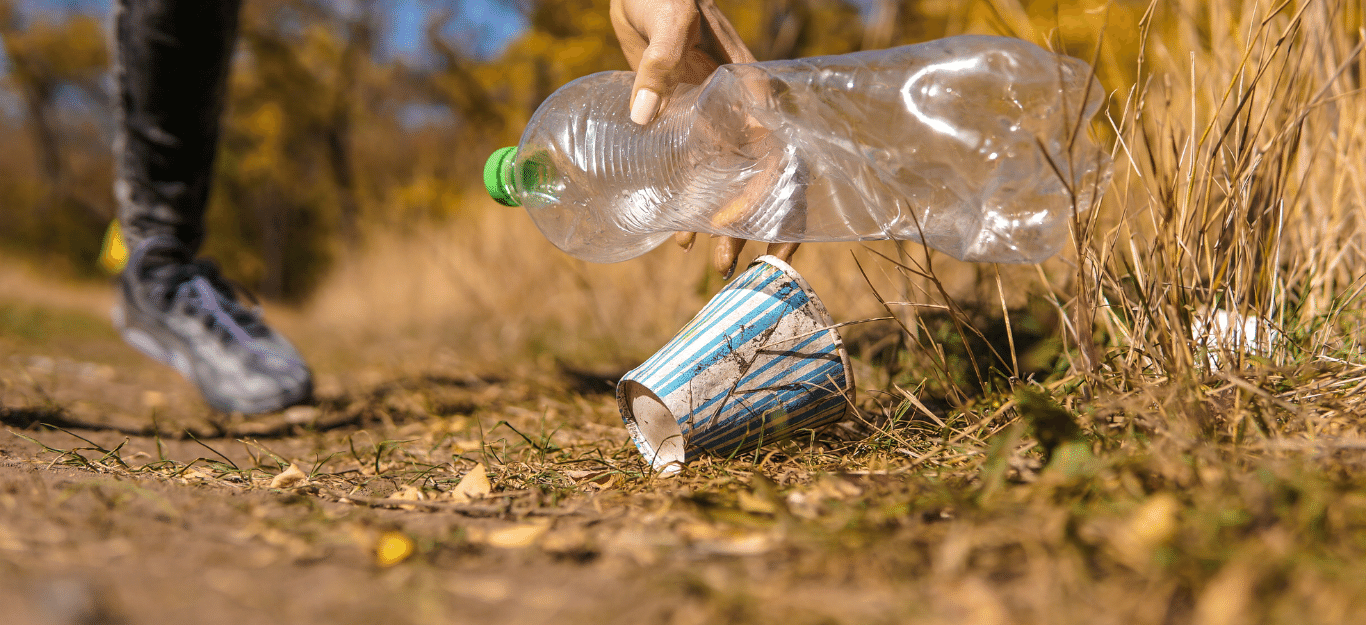
Remember, an eco-friendly campsite is not just about preservation but also about appreciation and respect for nature. By following these principles, we can ensure our camping activities don’t leave a lasting impact on these precious natural areas. In the next section, we’ll discuss how to dismantle your campsite and ensure you’ve left no trace.
Campsite Teardown and Cleanup
Tearing down your campsite might seem straightforward, but it’s an important process that requires careful attention to detail. It’s about more than just packing up; it involves ensuring you’ve left no trace and that the site is ready for the next visitors or for nature to reclaim. Let’s get into the details.
Proper Procedure for Tearing Down Your Campsite
Begin by systematically breaking down your setup. Take down your tent, ensuring it’s clean and dry to prevent mildew or mold during storage. Fold up your camp furniture and clean any food or waste from the camp kitchen area.
Double-check all your camping gear – it’s easy to leave tent pegs in the ground or cooking utensils behind. Place everything back in your backpack, making sure to distribute the weight evenly for your hike out.
Checklist for Ensuring No Trace Left Behind
Once your personal gear is packed up, it’s time to focus on the campsite. Walk through the area to look for any overlooked items. Even small things like bottle caps or bits of food should be removed.
If you had a campfire, ensure it’s completely extinguished. Douse any remaining embers or coals with water and stir with a stick to make sure there’s no heat left. Scatter the cooled ashes.
Check if you have left any marks or alterations on the site. If you moved rocks or logs, return them to their original places. Fill in any holes you might have dug. The goal is to make it appear as if you were never there.
It’s crucial to respect the privilege of camping by leaving our campsites in great shape. It’s about ensuring that the beautiful places we visit remain beautiful for future visitors and the wildlife that calls it home.
Having explored all these sections, you’re now equipped with knowledge about choosing, setting up, and responsibly managing a campsite.
Conclusion
Setting up a campsite involves more than pitching a tent and starting a fire. It’s about selecting the ideal location, creating a functional and organized space, prioritizing safety, and caring for the environment. We’ve explored each of these aspects in detail in this guide.
In “Choosing the Perfect Campsite”, we delved into the art of selecting the perfect campsite, keeping in mind factors like safety, regulations, weather, and terrain. From there, we discussed how to arrange a comfortable and efficient campsite in “Arranging Your Campsite”, emphasizing the strategic placement of tents, fire pits, camp furniture, and camp kitchens.
“Setting Up a Functional Camp Kitchen” was all about creating a practical and accessible kitchen space at the campsite. We discussed essential equipment, safe food storage, and efficient setup tips. We also touched on safety measures in “Campsite Safety Measures”, offering guidelines for campfires, wildlife precautions, and first aid essentials.
In our section “Ensuring an Eco-Friendly Campsite”, we stressed the importance of creating an eco-friendly campsite. We delved into the principles of Leave No Trace, emphasized proper waste disposal, and encouraged respect for nature and wildlife.
Finally, in “Campsite Teardown and Cleanup”, we covered how to responsibly dismantle your campsite, leaving no trace and ensuring that the site is ready for its next visitors.
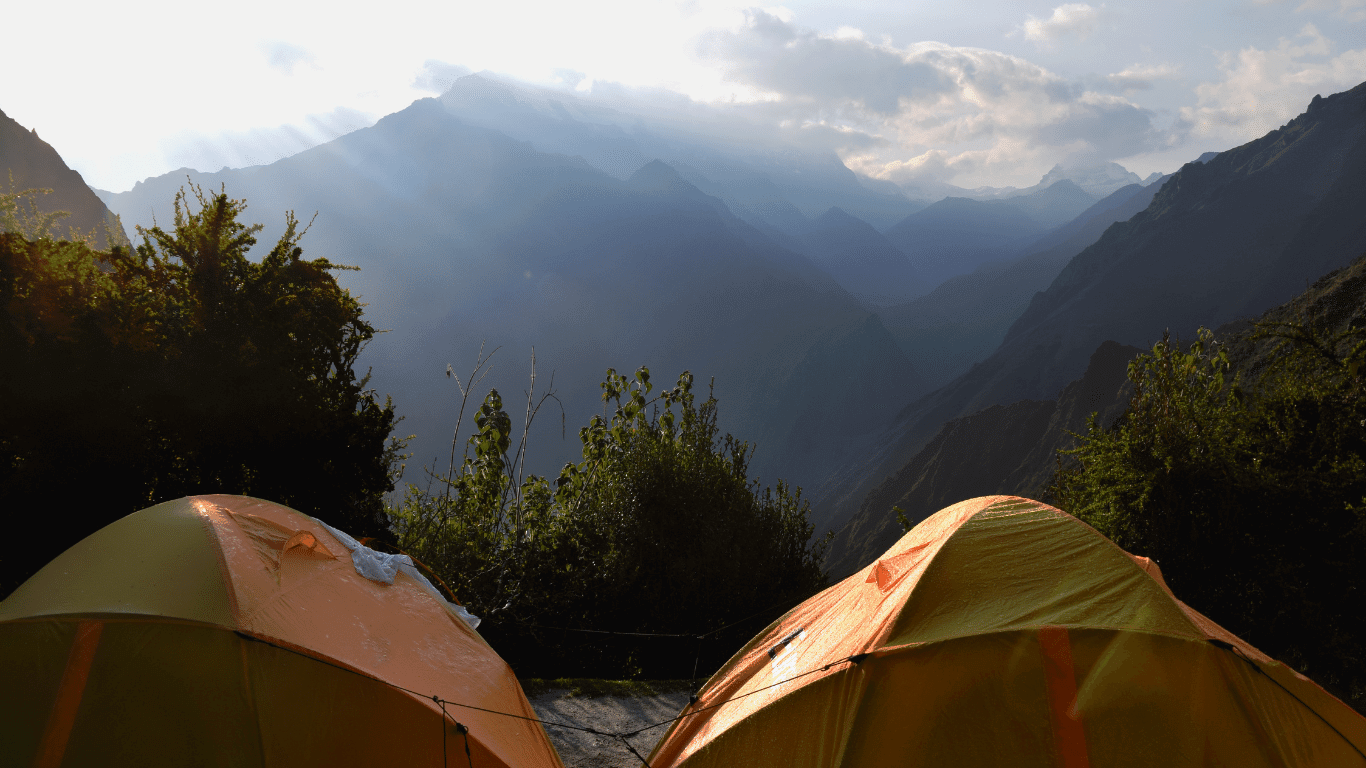
As you venture into the great outdoors for your camping trips, keep these guidelines in mind. Not only will you create a more enjoyable experience for yourself, but you’ll also contribute to preserving these precious spaces for future generations of campers.
Remember, camping is not just about enjoyment, but also about respect and responsibility towards nature. Safe travels, and happy camping!
FAQ
1. What is the best way to choose a campsite? The best campsites offer flat terrain, shelter from weather elements, a nearby water source, and are located away from hazards like dead trees. Always respect local rules and regulations when choosing your spot.
2. How should I arrange my campsite for maximum comfort and efficiency? Tent placement is key. Look for flat, clear areas, and position your sleeping area uphill from your kitchen. Fire pits should be centrally located, but at a safe distance from flammable items. Furniture placement depends on personal preference and the size of the group.
3. What essential items do I need for a functional camp kitchen? At minimum, you’ll need a portable stove, fuel, cookware, utensils, food storage containers, and cleaning supplies. Keep in mind that some campsites may have restrictions on certain types of stoves or fuels.
4. What safety measures should I take at my campsite? Safety measures include keeping a first-aid kit handy, maintaining a safe distance between your sleeping and cooking areas, properly extinguishing campfires, and storing food away from wildlife. Always let someone know where you’ll be camping and when you plan to return.
5. What does it mean to have an eco-friendly campsite? An eco-friendly campsite means following the Leave No Trace principles, which include respecting wildlife, minimizing campfire impact, properly disposing of waste, and leaving natural and cultural artifacts as they are.
6. How should I tear down my campsite? Tear down your campsite by dismantling all camping equipment, making sure to pack out all trash and leftover food. Check the area thoroughly to ensure you haven’t left anything behind.
7. Is it necessary to clean my campsite before leaving? Yes, cleaning your campsite before leaving is essential. Not only is it respectful to other campers, but it also protects wildlife who might ingest or become tangled in discarded items. Your goal should be to leave no trace of your stay.


